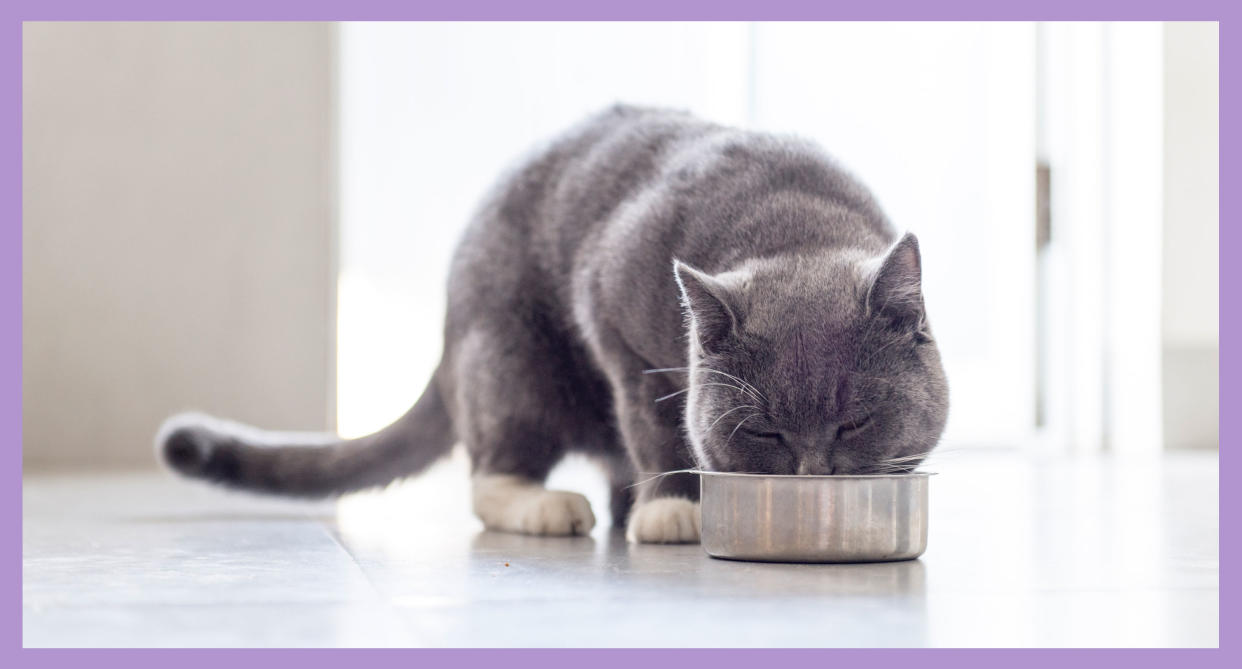These are the ingredients to avoid in your pet's food

We’ve become a nation of label readers for the food we feed our family, and many animal lovers are extending that to their pet’s food. But not everyone knows what ingredients to watch avoid and look for – or if they should be reading labels at all.
What should you be looking for on your pet’s food label?
Labels on human food can be confusing, and reading through unfamiliar terms on pet food can be extra intimidating when you’re not sure what the proper nutritional balance is for your dog or cat.
“It's hard for the average consumer to kind of figure out what fits, but if it has a lot of scientific things, it'll have some things that you just don't recognize,” explains Hyunmin Kim, DVM, veterinary staff manager, Community Medicine of the American Society for the Prevention of Cruelty to Animals, “I would say that's kind of a flag for ... I don't really know why this has to be in the food.”
Kim says there are specific preservatives to look out for: “BHA and BHT, so that's butylated hydroxyanisole and dibutylhydroxytoluene (also called butylated hydroxytoluene). These are basically just preservatives that are used to prevent the oil becoming oxidized or rancid.”
These preservatives, she explains, are “approved to be used in food in small quantity. But, obviously, there can be more than what might actually be safe. So it's definitely not something healthy. So when owners are looking at ingredients in pet foods, try to avoid foods that have that. Or, there's other alternatives for preservatives in food like vitamin C or vitamin E, which I think on the label they come up as ascorbic acid and tocopherol, those are better preservatives.”
Life-stage appropriate pet food is a must
Just like people, cats and dogs need a different nutritional mix at different stages in their lives. Kittens and puppies need more fat and protein, whereas older animals might need nutrients your vet will recommend or foods to manage their weight as they become less active.
“Most commercial pet foods are tested, and they generally will get a nutritional analysis by AAFCO, the Association of American Feed Control Officials,” says Mark Verdino, North Shore Animal League America’s vice president and chief of veterinary staff.
Verdino explains how their testing worked for life stages: “They regulate pet foods and feedstock for livestock and stuff like that. And they look at the ingredient list, and they will make sure that it meets the nutritional needs of whatever life stage they say it's supposed to meet. For example, puppies have more nutritional needs than a geriatric. So if they say it has enough protein for growth, it should have enough protein for growth and they verify that. Generally speaking, any food that has their statement on it, their seal, has gone through that feed testing. And for the most part, owners should feel comfortable that it meets their pets nutritional needs.”
You should also feel comfortable asking questions and doing your own research, Kim says. “Owners can also call the manufacturer and ask questions as well. One of the most important things to know is if the food brand that you choose has at least one full-time nutritionist on staff because that tells you that they actually formulated their ingredients properly for the certain life stages of animals.”
Not every ingredient in your pet’s food benefits their health
Remember, the ingredients list isn’t the only indicator of the nutritional value in pet food. Lisa M. Freeman, DVM, PhD, DACVN, board certified veterinary nutritionist and professor at Tufts University, reminds us that just because items listed on the label sound appealing, doesn’t mean that they have benefits for your pets.
“Some of the ingredients that are added — the artichokes and blueberries and things at the bottom of the list — are really added mostly for us as humans and trying to appeal to us to buy the food and often don't have any benefit for the animals themselves,” she explains. “So I really try to encourage owners not to read the ingredient list and to make their decisions on more objective information about the best for their pets.”
Your veterinarian should be the first point of reference when it comes to pet food
“It's certainly important to first talk to their veterinarian because their veterinarian knows the best and can help the owner make a really good objective decision,” says Freeman. “And the information really is going to be, is it from a well-established manufacturer? Do they have adequate nutritional expertise and rigorous quality control measures? Does it have the right levels of nutrients and the right level of calories for that individual animal, so that they can stay in good body condition and as healthy as possible?”
